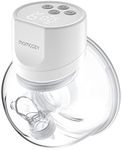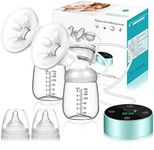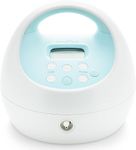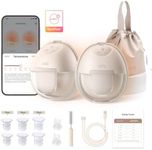Buying Guide for the Best Electric Breastfeeding Pumps
Choosing the right electric breastfeeding pump can make a significant difference in your breastfeeding journey. It's important to consider your lifestyle, how often you plan to pump, and your comfort level. Electric pumps are generally more efficient and quicker than manual pumps, making them a popular choice for mothers who need to pump frequently or are returning to work. Understanding the key specifications will help you select a pump that best fits your needs and ensures a comfortable and effective pumping experience.Suction PowerSuction power refers to the strength of the pump's ability to extract milk. It's important because it affects how efficiently and comfortably milk is expressed. Suction power is usually measured in mmHg (millimeters of mercury). Pumps with adjustable suction levels allow you to find a comfortable setting that mimics your baby's natural sucking pattern. If you plan to pump frequently, a pump with higher suction power and adjustable settings might be beneficial. For occasional use, a moderate suction power may suffice.
PortabilityPortability is about how easy it is to transport and use the pump on the go. This is crucial for mothers who need to pump outside the home or travel frequently. Portable pumps are typically lightweight and may come with a rechargeable battery or the option to use batteries, making them convenient for use without a power outlet. If you need to pump while at work or traveling, a compact and portable model would be ideal. For home use, portability might be less of a concern.
Noise LevelNoise level refers to how loud the pump is during operation. This is important for maintaining privacy and comfort, especially if you plan to pump in shared spaces or at night. Pumps are generally categorized as quiet, moderate, or loud. If discretion is important to you, look for pumps advertised as quiet or with noise-reducing features. If noise is not a concern, you might have more flexibility in choosing other features over noise level.
Double vs. Single PumpingThis specification refers to whether the pump can express milk from one breast at a time (single) or both breasts simultaneously (double). Double pumping is more efficient and can save time, making it ideal for mothers who need to pump frequently or have limited time. Single pumps are often more affordable and can be sufficient for occasional use. Consider how often you plan to pump and your time constraints when deciding between single and double pumping options.
Ease of CleaningEase of cleaning refers to how simple it is to disassemble and clean the pump parts. This is important for maintaining hygiene and ensuring the pump is ready for the next use. Pumps with fewer parts or dishwasher-safe components can save time and effort. If you value convenience and have a busy schedule, look for pumps that are easy to clean and maintain. If you don't mind spending extra time on cleaning, you might prioritize other features.
Comfort FeaturesComfort features include elements like soft breast shields, adjustable suction settings, and customizable pumping rhythms. These features are important for ensuring a comfortable and pain-free pumping experience. Pumps with more comfort features can help reduce discomfort and mimic a baby's natural feeding pattern. If you have sensitive breasts or plan to pump frequently, prioritize pumps with enhanced comfort features. If comfort is less of a concern, you might focus on other specifications.
















